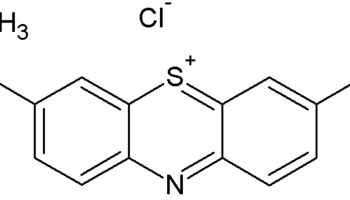Contents
What is Savant syndrome
People with savant syndrome are characterized by their remarkable talent in one or more domains (e.g. music, memory) but also by the presence of some form of developmental condition such as autism spectrum disorder 1. Savants demonstrate exceptional and prodigious abilities in specific areas, such as memorization, calculation, music, art, or language. Whatever the skill is, however, it is always connected to extraordinary memory that is exceedingly deep but narrow 2. Savant syndrome is a condition where prodigious talent can co-occur with developmental conditions such as autism spectrum conditions (autism) 3. In this study, autism spectrum disorder was the underlying disability 75% of the time, while other central nervous system (CNS) disorders are present 25% of the time 4. In addition, 10% of the savants were “acquired” savants with various brain injury or disease the underlying acquired disability. It is not yet clear why some autistic people develop savant skills while others do not. Savant syndrome is poorly understood and the causes and mechanism are currently unknown 5. Many researchers have presented theories to attempt to account for various aspects of the condition, but no one theory is sufficient.
Recent findings suggest that savant syndrome is defined by observable differences in aspects of cognition, perception, and behavior that go beyond the mere presence of savant skills themselves. Researchers found that areas of particular influence on savant talent relate specifically to higher sensory sensitivity 6, obsessive behavior 7, and systemising and technical/spatial traits 6 along with a more careful and engaged learning style when presented with a novel savant skill 7.
Autism spectrum disorder describes a set of symptoms involving difficulties in social communication, unusually repetitive/routine behaviours, unusually narrow interests, and atypical sensitivity to sensory stimuli 8. Recent models of autism also focus on strengths associated with the condition (not just on their difficulties), in areas such as perceptual and cognitive processing 9, systemizing 10, and attention to detail 11, as well as areas of interest, aptitude, and talents. In savant syndrome, talents and skills observed in such individuals far exceed their own overall level of intellectual or developmental functioning.
Exceptional cases of prodigious savant syndrome occur when an autistic individual’s level of skill goes beyond that seen even in the general population. A well-known example of a prodigious savant is the artist Stephen Wiltshire who is capable of drawing hyper-detailed cityscapes from memory and who also has autism 12. Savant skills can exist in a variety of areas, but most savants show skills in art (e.g. hyper-detailed drawings), music (proficiency in musical instrument playing), maths (fast mental arithmetic), calendar calculation (the ability to provide the day of the week for any given date), and memory recall of facts, events, numbers etc. 13.
Although savant syndrome can co-occur with a range of developmental conditions, most cases involve autism in some form 14 and savant syndrome has been reported to occur in up to 37% of autistic individuals 15. The emergence of savant skills in autistic adults is not fully understood, and there is a lack of empirical evidence to support current theories.
There is no consensus on exactly how savant skills are developed in autistic individuals. Bölte and Poustka 16 showed that savants do not show differences in standard intelligence compared to other autistic individuals. It could therefore be that their skills develop simply through many hours of extended practice. This would be similar to the abilities of neurotypical ‘memory athletes’ who can, for instance, memorise thousands of digits of pi using mnemonic techniques, with top performers relying on thousands of hours of practice—as in other sports 17. Savants too appear to require practice.
Two theoretical models have bridged the gap between need-for-practice and autistic symptoms in savants 18. Happé and Vital 18 proposed that one way in which savant skills might emerge could be through the autism-related trait of mind-blindness, which is the difficulty in attributing mental states to others 19. Happé and Vital 18 suggest that a lack of interest in the social world could serve to free up cognitive and time resources that are usually dedicated to monitoring social interactions. As a result, these extra resources could be re-allocated to the development of talent by permitting more time (i.e. practice) to the nurturing of restricted interests commonly observed in autistic individuals. Since these cognitive resources have been allocated away from monitoring social interactions, a further expected consequence might also be lower social and communication skills in savants.
In contrast, Simner et al. 7 suggest that the hours spent achieving savant ability are the result not of mind-blindness, but of the autism-linked trait of obsessiveness—i.e. savants have an obsessive urge to over-rehearse their skills to prodigious levels. Tentative support for this comes from LePort et al. 20 who showed that a group of individuals with prodigious event-memory (some of whom are likely to be savants) showed higher obsessional traits than controls. However, the controls they tested did not have autism, making it unclear whether obsession was tied to savant skills per se or simply to autism (or other co-occurring neurodevelopmental differences) 21. O’Connor and Hermelin 22 compared savants to controls with autism and drew similar conclusions about obsessiveness—but their questionnaire also contained items unrelated to obsessions (e.g. decision-making). In addition, they may not have corrected their question-by-question statistics for multiple comparisons, making it difficult to tie their findings to any particular trait. Similarly, Howlin et al. 23 used a questionnaire of just five questions, testing repetitive behaviours with a number of other traits (e.g. sensory sensitivity), again making it difficult to interpret their findings (of no difference between autistic-savants and autistic-nonsavants).
Finally, Bennet and Heaton 24 found higher scores for savant children on a five-question factor they named ‘obsessions and special interests’ compared to autistic-nonsavants, but traced this back to an individual question related to becoming absorbed in different topics. Given these differences across studies in their focus, questionnaire length, and testing groups, it remains unclear whether savants are particularly notable for their obsessional traits, above and beyond what we would expect from autism alone.
Although both types of rehearsal (from mind-blindness or obsessiveness) could influence savant skills, this practice alone probably does not act as the only catalyst for talent to emerge. There may also be differences in certain cognitive abilities, linked to autism, which manifest themselves more strongly in individuals who acquire savant skills compared to those who do not. Specifically, it was proposed that talent could emerge from autism traits such as excellent attention-to-detail, hyper-systemising, and sensory differences. For example, the combination of attention-to-detail and hyper-systemizing may predispose some autistic individuals to develop talent through the increased detection of ‘if p, then q’ rules 6. These rules can be found in savant skills such as calendar calculation (i.e. stating the weekday for a given date) and can be learned from predictable patterns within the calendar itself.
A related proposal is Mottron et al.’s 25 ‘veridical mapping’ that links savant talent to the enhanced ability of autistic individuals to detect regularities within and between systems. Some savant skills do indeed depend on mapping regularities across systems (e.g. mapping from musical pitch to note-label in absolute pitch). In addition, savants appear to show a particular cognitive style of enhanced local processing, as outlined in the enhanced perceptual functioning model 9, and less global interference (e.g. in a target-detection task) at least when activities demand active interaction 26. Again, however, it is not clear whether these influences are tied to being a savant or simply having autism.
Savant talent may also have important sensory components. Baron-Cohen et al. 27 argue that heightened sensory sensitivity may be the pre-requisite for excellent attention-to-detail, which they theorise as an autistic trait linked to savant syndrome. Subjective accounts of sensory irregularities in autism have been shown previously 28, and multiple studies have objectively demonstrated superior visual, auditory, and tactile sensory perception in autism 29. These sensory differences may bring about the emergence of talent by affecting information processing at an early stage 27 although this suggestion is not universally supported 24.
One final sensory link between autism and savant syndrome is the presence of synaesthesia, where stimuli such as letters, numbers, and sounds invoke automatic and additional sensory experiences such as colors 30. Hughes et al. 31 found that synaesthesia occurs at higher levels among autistic individuals with savant skills (but not those without savant skills). Simner et al. 32 hypothesized that the obsessive over-rehearsal of savants may focus particularly on skills born out of synaesthesia, building on earlier work 33.
Congenital and Acquired Savant Syndrome
Savant syndrome can be congenital or acquired, and it is not a stand-alone condition 4. Rather, the special savant skills are always grafted on to some underlying disability that can include, but is not limited to, autism spectrum disorder.
Congenital savant syndrome means savant skills present from birth or emerging in early childhood with conditions such as early onset and late onset autism spectrum disorder, other developmental disorders, intellectual disability, Williams syndrome, agenesis of the corpus callosum, tuberous sclerosis, hypopituitarism, or other brain disorders as the underlying disability 4.
Acquired savant syndrome refers to savant abilities that emerge, sometimes at a prodigious level, in a previously neurotypical child or adult following head injury, stroke, dementia or other central nervous system (CNS) incident 34. Recent reports of savant-type abilities emerging in previously healthy
elderly persons with fronto-temporal dementia have been particularly intriguing 35. The prospect of dormant potential triggered, or released, by CNS injury existing within each person has far-reaching implications.
Sex distribution among those with congenital savant syndrome is approximately 4:1, male:female 4. The disproportionate ratio may be explained by the presence of testosterone in the male fetus. In a developing human fetus, the left hemisphere is always exposed to an external damage or injury for a longer period of time. In the male fetus, high levels of circulating testosterone can act as neurotoxin during this period, causing damage to the left hemisphere 36. The same reason may also account for the high male:female ratio in other developmental disorders like autism and learning disabilities. Other studies showed that females have enhanced ability to eliminate environmental toxins during the early postnatal period, therefore reducing the risk for brain damage 36. Another hypothesis to explain the male bias has to do with the X chromosome. As mentioned above, the X chromosome may be involved in the proper development of the amygdala, and females are at a reduced risk because they have two X chromosomes, whereas males only have one 37.
Savants are classified into three categories based on the spectrum of their abilities 2.
- Splinter savants are individuals with some skills and interest in a specific area, that stand out in contrast to their overall level of functioning 2. For example, they may be obsessively preoccupied with memorizing maps, historical facts, and sports trivia.
- Talented savants are those with impressive skills that stand out among individuals with similar level of functioning 5. Talented savants show musical, artistic, or mathematical skills that seem very conspicuous compared to their overall disability.
- Prodigious savants are individuals that display extraordinary skills not only in contrast to their general level of functioning, but that are also remarkable compared to the general population 5. Prodigious savants are extremely rare but are most easily recognizable due to their conspicuity, while many savants of the other two types go unnoticed. There have been less than one hundred reported cases of prodigious savants in the past century 2.
Savant syndrome symptoms
Primary disability in congenital savant syndrome
Seventy-five percent of individuals in whom savant syndrome was present in childhood had an autism-related condition as the underlying disorder. Twenty-five percent had other developmental disabilities or other CNS conditions as the underlying disorder, including intellectual disability, Williams syndrome, agenesis
of the corpus callosum, tuberous sclerosis, and hypopituitarism. That is not surprising since, as noted above, approximately 1 in 10 children with autism have savant syndrome, whereas that number drops to 1 in 1400 in other CNS disorders.
Most savants have low IQ’s, but their skills seem to be IQ independent 38. Due to the lack of reasoning ability, savants have difficulty putting their skills to use. Many savants show inability to perform simple tasks such as tying shoe laces, counting to ten, counting money, or following instructions 2. Impaired social and communication skills are common in savants, and many savants display repetitive and stereotyped patterns of behavior 39.
Single or multiple abilities in congenital savants, principal skills
Among congenital savants, 55% have a single skill and 45% have multiple skills. Music is the most commonly reported principal skill in congenital savants, whether the savant had single or multiple skills. Art is the second most common. If memory is considered the principal skill (as opposed to only accompanying a skill), it is the third most common skill followed by mathematics. Calendar calculating, while present in many savants along with the principal skill, was reported as the principal skill in only 5% of savants. Other skills, in descending order of frequency were polyglot (language), visual-spatial, athletic, computers, and extrasensory perception.
Savant syndrome skills and their prevalence:
- Music (performance, composition, perfect pitch, memory) 25%
- Art (drawing, painting, sculpting) 19%
- Memory (facts, numbers, dates, photographic hyperthymestic) 20%
- Mathematics (lightning calculating, exponentials, truths) 11%
- Calendar calculating (day of week for past or future dates) 5%
- Language (polyglot skills in learning or speaking language) 4%
- Visual-spatial/mechanical (maps, directions, how things work) 8%
- Athletic (golf, basketball, soccer) 3%
- Computer (programming, coding) 2%
- Extrasensory perception 1%
- Other 2%
Since the early description of savant syndrome over 100 years ago, most of the special skills have been in 5 categories: music, art, calendar calculating, lightning calculating, and visual-spatial/mechanical skills. While it is true that these skill areas still dominate the inventory of abilities, it’s been shown that savant skills can include many other skills as well, such as language, computer, athletic, and extrasensory abilities. Some savants have extraordinary memory as their principal skill, but increased memory capacity generally accompanies the principal savant ability.
Rote memory & Inability to abstract reasoning
The memory of savants seems to be very deep but narrow, concrete, non-symbolic, rigid, repetitive, and unconscious 2. It relies on the more primitive and lower-level brain circuitry, and does not involve critical thinking or associative learning 40. They lack creativity and cognitive flexibility 41. Mishkin et al. referred to it as “habit memory”, as opposed to “cognitive memory” 42. In most reported cases, a musical savant’s talent shines not in their ability to compose, but in their ability to play back, note for note, pieces of music that they have heard. Similarly, an artistic savant’s talent tends to shine in their ability to reproduce with great realistic detail from memory. Schipperheijn et al. 43 suggested that savant skills may be due to a “failure to forget” rather than an enhanced ability to remember.
Innate ability to access less-processed information
A hypothesis suggests that savants have an innate ability to directly access the less-processed, lower level information that exists in all human brains, but is normally unavailable to conscious awareness 37. Most savants have a failure of top-down inhibition, and therefore may be able to access the information that is normally blocked by perception and logic 44.
Savant syndrome management
Researchers have provided a clear answer on what to do with individual with Savant syndrome, the answer is to ‘train the talent’! And as one does so, some of the ‘defect’ subsides. The special talent, in fact, becomes a conduit towards normalization, using the unique savant skills to achieve better socialization, language acquisition and independence, all without the trade-off or loss of special abilities for those valuable gains in other areas of functioning. The special skills can be used as a way of engaging attention of the savant, and rather than seeing the special abilities as frivolous, they can be used as a form of expression with the goal of channelling those abilities more usefully.
Clark 45 developed a savant skill curriculum using a combination of successful strategies currently employed in the education of gifted children (enrichment, acceleration and mentorship) and autism education (visual supports and social stories) in an attempt to channel and apply, usefully, the often nonfunctional obsessive savant and splinter skills of a group of students with autism. This special curriculum proved highly successful in the functional application of savant skills and an overall reduction in the level of autistic behaviours in many subjects. Improvements in behavior, social skills and academic self-efficacy were reported, along with gain in the communication skills of some subjects.
Donnelly and Altman 46 noted that increasing numbers of ‘gifted students with autism’ are now being included in gifted and talented classrooms with nondisabled gifted peers. Accompanying elements are an adult mentor in the field of their talent, individual counseling and small-group social skills training.
Some specialized schools are emerging as well. For example, Soundscape Centre in Surrey, England began operating in 2003 as the only specialized educational facility in the world uniquely dedicated to the needs and potential of persons with sight loss and special musical abilities, including musical savants. Orion Academy (https://www.orionacademy.org) in Moraga, California, USA specializes in providing a positive educational experience for high school students with Asperger’s syndrome. Hope University (https://www.hiu.edu/) in Anaheim, California is a fine arts facility for adults with developmental disabilities. Its mission is to ‘train the talents and diminish the disability’ through the use of fine arts therapy including visual arts, music, dance, drama and storytelling.
Dr Temple Grandin recent book, “Developing talents: Careers for individuals with Asperger syndrome and highfunctioning autism”, is an excellent, practical resource for discovering, nurturing and ‘training the talent’ so that many persons on the autistic spectrum can enjoy the important experience of work and ‘the satisfaction of contributing to their families and their communities, of being independent and economically self-sufficient’. This book outlines methods of helping children ‘develop their natural talents’ using ‘drawing, writing, building models, programming computers’ and similar skills to help build a ‘portfolio’ of skills that can help in the search for a meaningful work experience. The book helps persons on the autistic spectrum, and their family members, teachers, counsellors and others to better understand and develop the career planning process for these special persons with special skills.
- Miller LK. The savant syndrome: intellectual impairment and exceptional skill. Psychol Bull. 1999;125:31–46. doi: 10.1037/0033-2909.125.1.31[↩]
- Treffert, D. A. (2011). Islands of Genius: The Bountiful Mind of the Autistic, Acquired, and Sudden Savant. New York: Jessica Kingsley Publishers Ltd.[↩][↩][↩][↩][↩][↩]
- Hughes JEA, Ward J, Gruffydd E, et al. Savant syndrome has a distinct psychological profile in autism. Mol Autism. 2018;9:53. Published 2018 Oct 12. doi:10.1186/s13229-018-0237-1 https://www.ncbi.nlm.nih.gov/pmc/articles/PMC6186137[↩]
- The Savant Syndrome Registry: A Preliminary Report. http://www.wisconsinmedicalsociety.org/_WMS/publications/wmj/pdf/114/4/158.pdf[↩][↩][↩][↩]
- Treffert, D. A. (2009). The Savant Syndrome: An Extraordinary Condition. A Synopsis: Past, Present, Future. Philos Trans R Soc Lond B Biol Sci, 364(1522), 1351-7.[↩][↩][↩]
- Baron-Cohen S, Ashwin E, Ashwin C, Tavassoli T, Chakrabarti B. Talent in autism: hyper-systemizing, hyper-attention to detail and sensory hypersensitivity. Philos Trans R Soc B Biol Sci. 2009;364:1377–1383. doi: 10.1098/rstb.2008.0337[↩][↩][↩]
- Simner J, Mayo N, Spiller M-J. A foundation for savantism? Visuo-spatial synaesthetes present with cognitive benefits. Cortex. 2009;45:1246–1260. doi: 10.1016/j.cortex.2009.07.007[↩][↩][↩]
- American Psychiatric Association. Cautionary statement for forensic use of DSM-5. 5th edition. Arlington: American Psychiatric Publishing; 2013[↩]
- Mottron L, Dawson M, Soulières I, Hubert B, Burack J. Enhanced perceptual functioning in autism: an update, and eight principles of autistic perception. J Autism Dev Disord. 2006;36:27–43. doi: 10.1007/s10803-005-0040-7[↩][↩]
- Baron-Cohen The extreme male brain theory of autism. Trends Cogn Sci. 2002;6:248–254. doi: 10.1016/S1364-6613(02)01904-6.[↩]
- O’Riordan M, Plaisted K. Enhanced discrimination in autism. Q J Exp Psychol Sect A Hum Exp Psychol. 2001;54:961–979. doi: 10.1080/713756000[↩]
- Furniss GJ. Celebrating the artmaking of children with autism. Art Educ. 2008;61:2008. doi: 10.1080/00043125.2008.11518990[↩]
- Treffert DA. The savant syndrome: an extraordinary condition. A synopsis: past, present, future. Philos Trans R Soc B Biol Sci. 2009;364:1351–1357. doi: 10.1098/rstb.2008.0326[↩]
- Chia NKH. Autism enigma: the need to include savant and crypto-savant in the current definition. Acad Res Int 2012;2:234–240.[↩]
- Howlin P, Goode S, Hutton J, Rutter M. Savant skills in autism: psychometric approaches and parental reports. Philos Trans R Soc B Biol Sci. 2009;364:1359–1367. doi: 10.1098/rstb.2008.0328.[↩]
- Bölte S, Poustka F. Comparing the intelligence profiles of savant and nonsavant individuals with autistic disorder. Intelligence. 2004;32:121–131. doi: 10.1016/j.intell.2003.11.002[↩]
- Hu Y, Ericsson KA, Yang D, Lu C. Superior self-paced memorization of digits in spite of a normal digit span: the structure of a memorist’s skill. J Exp Psychol Learn Mem Cogn. 2009;35:1426–1442. doi: 10.1037/a0017395[↩]
- Happé F, Vital P. What aspects of autism predispose to talent? Philos Trans R Soc B Biol Sci. 2009;364:1369–1375. doi: 10.1098/rstb.2008.0332[↩][↩][↩]
- Frith U. Mind blindness and the brain in autism. Neuron. 2001;32:969–979. doi: 10.1016/S0896-6273(01)00552-9.[↩]
- LePort AKR, Mattfeld AT, Dickinson-Anson H, Fallon JH, Stark CEL, Kruggel F, et al. Behavioral and neuroanatomical investigation of Highly Superior Autobiographical Memory (HSAM) Neurobiol Learn Mem. 2012;98:78–92. doi: 10.1016/j.nlm.2012.05.002[↩]
- Parker ES, Cahill L, McGaugh JL. A case of unusual autobiographical remembering. Neurocase. 2006;12:35–49. doi: 10.1080/13554790500473680.[↩]
- O’Connor N, Hermelin B. Talents and preoccupations in idiots-savants. Psychol Med. 1991;21:959–964. doi: 10.1017/S0033291700029949.[↩]
- Howlin P, Goode S, Hutton J, Rutter M. Savant skills in autism: psychometric approaches and parental reports. Philos Trans R Soc B Biol Sci. 2009;364:1359–1367. doi: 10.1098/rstb.2008.0328[↩]
- Bennett E, Heaton P. Is talent in autism spectrum disorders associated with a specific cognitive and behavioural phenotype? J Autism Dev Disord. 2012;42:2739–2753. doi: 10.1007/s10803-012-1533-9[↩][↩]
- Mottron L, Bouvet L, Bonnel A, Samson F, Burack JA, Dawson M, et al. Veridical mapping in the development of exceptional autistic abilities. Neurosci Biobehav Rev. 2013;37:209–228. doi: 10.1016/j.neubiorev.2012.11.016[↩]
- Pring L, Ryder N, Crane L, Hermelin B. Local and global processing in savant artists with autism. Perception. 2010;39:1094–1103. doi: 10.1068/p6674[↩]
- Baron-Cohen S, Ashwin E, Ashwin C, Tavassoli T, Chakrabarti B. Talent in autism: hyper-systemizing, hyper-attention to detail and sensory hypersensitivity. Philos Trans R Soc B Biol Sci. 2009;364:1377–1383. doi: 10.1098/rstb.2008.0337.[↩][↩]
- McMahon C, Vismara L, Solomon M. Neural mechanisms of emotion regulation in autism spectrum disorder. J Autism Dev Disord. 2015;5:2–3. doi: 10.1007/s10803[↩]
- Heaton P, Davis RE, Happé FGE. Research note: exceptional absolute pitch perception for spoken words in an able adult with autism. Neuropsychologia. 2008;46:2095–2098. doi: 10.1016/j.neuropsychologia.2008.02.006[↩]
- Ward J. Synesthesia. Annu Rev Psychol. 2013;64:49–75. doi: 10.1146/annurev-psych-113011-143840.[↩]
- Hughes JEA, Simner J, Baron-Cohen S, Treffert DA, Ward J. Is synaesthesia more prevalent in autism spectrum conditions? Only where there is prodigious talent. Multisens Res. 2017;30:391–408. doi: 10.1163/22134808-00002558.[↩]
- Simner J. Defining synaesthesia. Br J Psychol. 2012;103:1–15. doi: 10.1348/000712610X528305.[↩]
- Bor D, Billington J, Baron-cohen S. Savant memory for digits in a case of synaesthesia and Asperger syndrome is related to hyperactivity in the lateral prefrontal cortex. Neurocase. 2007;13:311–319. doi: 10.1080/13554790701844945[↩]
- Lythgoe, M., Pollak, T., Kalmas, M., de Hann, M. & Chong, W. K. 2005 Obsessive, prolific artistic output following subarachnoid hemorrhage. Neurology 64, 397–398.[↩]
- Miller, B. L., Boone, K., Cummings, L. R. & Mishkin, F. 2000 Functional correlates of musical and visual ability in frontotemporal dementia. Br. J. Psychiatry 176, 458–463. doi:10.1192/bjp.176.5.458[↩]
- Baron-Cohen, S. (2003). The Essential Difference: Male and Female Brains and the Truth About Autism. New York: Basic Books.[↩][↩]
- Young, R. L., Ridding, M. C., Morrell, T. L. (2004). Switching Skills on by Turning Off Part of the Brain. Neurocase, 10(3), 215-222.[↩][↩]
- O’Connor, N., & Hermelin, B. (1991). Talents and Preoccupations in Idiot-savants. Psychol Med, 21(4), 959-964.[↩]
- O’Connor, N., & Hermelin, B. (1989). The Memory Structure of Autistic Idiot-savant Mnemonists. Br J Psychol, 80(1), 97-111.[↩]
- Treffert, D. A., & Wallace, G. L. (2002). Living with Savant Syndrome. Sci Am, 286(6), 85.[↩]
- Treffert, D. A., & Christensen, D. D. (2005). Inside the Mind of a Savant. Sci Am, 293(6), 108-113.[↩]
- Rovee-Collier, C. K., Hayne, H., Colombe, M. (2001). The Development of Implicit and Explicit Memory. USA: John Benjamins Publishing.[↩]
- Schipperheijn, J. A. M., & Dunne, F. J. (1990). The Savant Syndrome: Genius and Mental Handicap Combined. Psychiatric Bulletin, 14, 475-476.[↩]
- Autism and Savant Syndrome. International Edu Journal, 2(4), 329-333[↩]
- Clark, T. 2001 The application of savant and splinter skills in the autistic population through curriculum design: a longitudinal multiple replication case study. PhD thesis, School of Education Studies, The University of New South Wales, Sydney, Australia.[↩]
- Donnelly, J. A. & Altman, R. 1994 The autistic savant: recognizing and serving the gifted student with autism. Roeper Rev. 16, 252–255.[↩]





